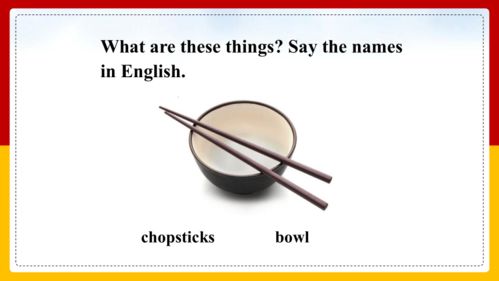The World of Textiles:A Comprehensive Guide to Different Fiber Types
"The World of Textiles: A Comprehensive Guide to Different Fiber Types" is a comprehensive guide that provides an in-depth exploration of the world of textiles, covering various fiber types and their characteristics. The book covers a wide range of topics, including the different types of fibers, their properties, uses, and applications.,The book begins with an introduction to the history and evolution of textiles, highlighting some of the key developments in the industry over the years. It then moves on to discuss the different types of fibers used in textile production, including natural fibers such as cotton, wool, silk, and linen, as well as synthetic fibers like polyester and nylon.,Each type of fiber is thoroughly examined, providing detailed information on its composition, structure, and physical properties. This includes information on how the fibers are produced, their strengths and weaknesses, and how they interact with each other when combined in fabrics.,The book also covers the various uses of textiles, from clothing and home furnishings to industrial materials and medical devices. It highlights the importance of textiles in our daily lives and the challenges faced by manufacturers and consumers alike in meeting the needs of the modern world.,Overall, "The World of Textiles: A Comprehensive Guide to Different Fiber Types" is an essential resource for anyone interested in the fascinating world of textiles. With its extensive coverage of fiber types, properties, and uses, it provides readers with a comprehensive understanding of the diverse range of textiles available today.
Introduction: Textiles have been an integral part of human life for centuries, providing warmth, comfort, and style. From the softness of cotton to the strength of polyester, each fiber type has its unique properties and applications. In this guide, we will explore the world of textiles and introduce you to some of the most popular fiber types used in clothing, upholstery, and other fabrics.
Cotton: Cotton is one of the most widely used fibers in the world. It is soft, breathable, and absorbent, making it ideal for creating comfortable and breathable clothing. Cotton is also biodegradable, which makes it a sustainable option for many industries. One example of a cotton product is a T-shirt, which is made from 100% cotton yarn.
Wool: Wool is another popular fiber that is known for its durability and warmth. It is often used in outdoor clothing and bedding due to its ability to regulate body temperature. Wool is also hypoallergenic, making it suitable for people with sensitive skin. One example of a wool product is a sweater, which is made from 50% wool and 50% polyester blend.

Polyester: Polyester is a synthetic fiber that is highly resistant to wear and tear. It is commonly used in sportswear, such as jackets and shorts, due to its wrinkle-resistant and moisture-wicking properties. Polyester is also available in various colors and patterns, making it easy to match with different outfits. One example of a polyester product is a jacket, which is made from 100% polyester.
Rayon: Rayon is a luxurious and delicate fiber that is known for its flowing texture and soft feel. It is often used in evening gowns and formal wear due to its elegant appearance. Rayon is also breathable and lightweight, making it suitable for hot weather. One example of a rayon product is a dress, which is made from 50% rayon and 50% polyester blend.
Nylon: Nylon is a strong and durable fiber that is commonly used in outdoor clothing, such as tents and backpacks. It is also used in athletic wear, such as pants and shorts, due to its resistance to abrasion. Nylon is also waterproof and breathable, making it suitable for use in wet conditions. One example of a nylon product is a raincoat, which is made from 100% nylon.
Acrylic: Acrylic is a man-made fiber that is resistant to water and stains. It is commonly used in home furnishings, such as curtains and upholstery, due to its durability and ease of cleaning. Acrylic is also available in various colors and patterns, making it easy to match with different decor styles. One example of an acrylic product is a sofa cover, which is made from 100% acrylic.
Conclusion: The world of textiles is vast and diverse, with countless fiber types available to create beautiful and functional products. By exploring the different fibers and their properties, you can become more knowledgeable about the materials that make up your wardrobe and everyday items. Whether you are looking for something soft and comfortable or something strong and durable, there is a fiber out there that will meet your needs. Happy shopping!

在纺织品的世界里,各种纤维如同繁星点缀,各自独特且魅力无穷,本篇文章将带您领略各种纤维的独特魅力,并通过图片展示它们的特点,我们将通过英文案例说明来详细介绍这些纤维。
主要纤维类型及其图片展示
天然纤维:
(图片展示)
| 纤维名称 | 图片展示 | 特点描述 |
|---|---|---|
| 棉花 | 棉花花朵 | 棉花是一种天然纤维,柔软、细腻、吸湿性好。 |
| 亚麻 | 亚麻纤维长条 | 亚麻纤维具有高强度、吸湿性好、抗静电等特性。 |
| 羊毛 | 羊毛纤维柔软、光泽度好 | 羊毛纤维柔软、保暖性强,常用于毛衣和床上用品。 |
| 丝绸 | 丝绸面料 | 丝绸面料轻盈、光滑、透气性好,常用于高档服装和家居装饰。 |
人造纤维:
(图片展示)

| 纤维名称 | 图片展示 | 应用领域 |
|---|---|---|
| 聚酯纤维 | 聚酯纤维面料 | 广泛应用于服装、家居用品等。 |
| 聚酰胺纤维 | 聚酰胺纤维面料 | 高强度、耐磨性好,适用于工业和运动用品。 |
| 合成纤维混纺 | 混纺面料示例 | 人造纤维与多种天然或合成材料混纺,具有多种性能。 |
案例说明:纺织品中各种纤维的应用与优势
-
棉花的应用与优势:棉花是一种天然纤维,以其柔软、细腻、吸湿性好等特点广泛应用于各种纺织品中,棉花制品如棉质衣物、床上用品等深受消费者喜爱,棉花还具有环保、可持续性强的特点,是纺织行业的重要发展方向。
-
亚麻的应用与优势:亚麻纤维具有高强度、吸湿性好、抗静电等特性,广泛应用于各种纺织品中,亚麻制品如亚麻布、亚麻纱线等具有优良的透气性和吸湿性,适合制作夏季衣物和床上用品,亚麻还具有抗菌、防霉等特殊功能,使其在纺织行业中具有很高的应用价值。
纺织品中的各种纤维各有特色,它们在纺织行业中扮演着重要的角色,通过图片展示和案例说明,我们可以更好地了解各种纤维的特点和优势,在未来的纺织行业中,随着科技的不断进步和人们对于舒适、环保、美观等需求的不断提高,各种纤维的应用前景将更加广阔。
Articles related to the knowledge points of this article:
The Ugandan Textile Market A Global Perspective and Regional Insights
The Unparalleled Luxury of 腾翔印花纺织品
The Art of Textile Inspection with the Latest in Automatic Machinery



